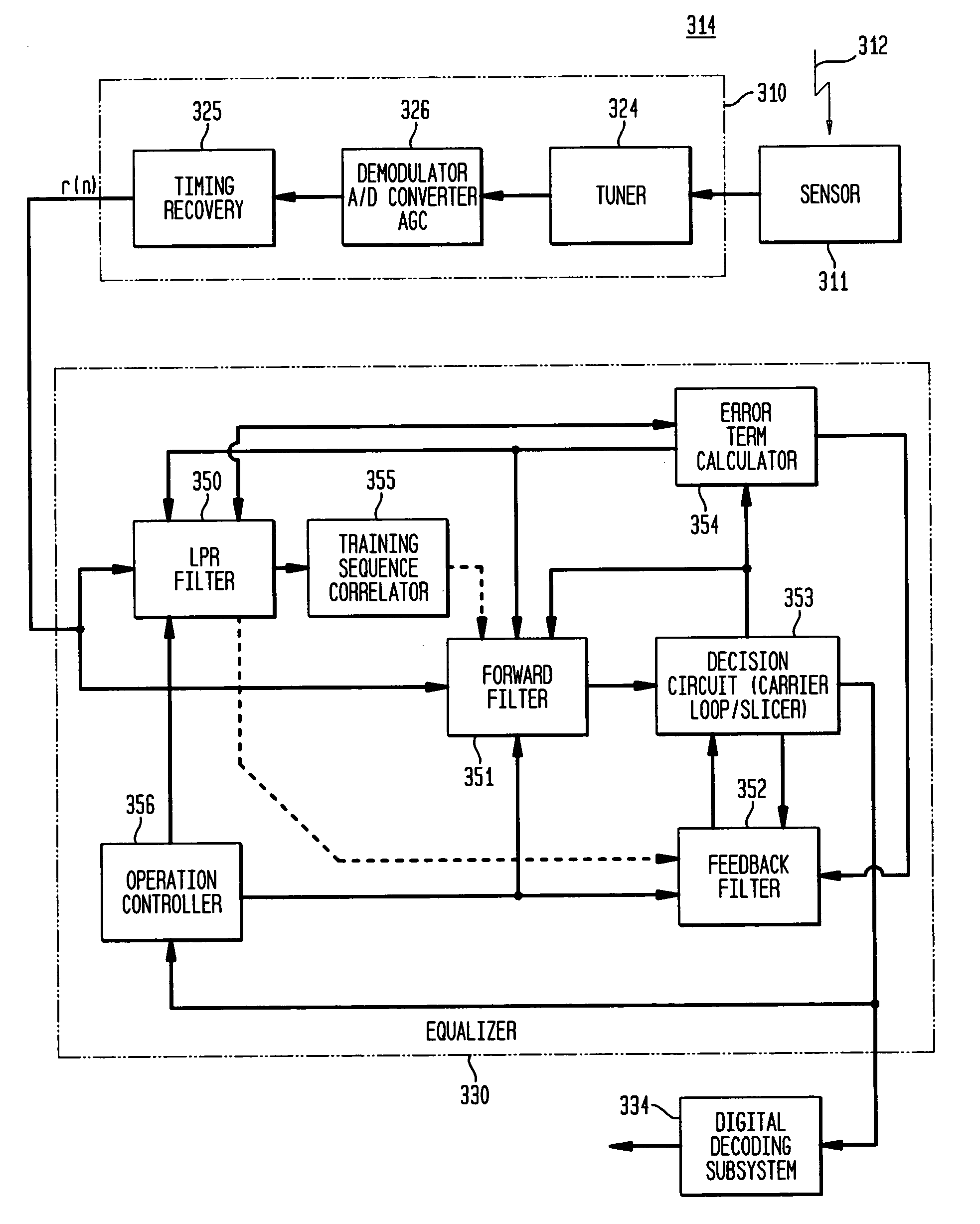Linear prediction based initialization of a single-axis blind equalizer for VSB signals
- Summary
- Abstract
- Description
- Claims
- Application Information
AI Technical Summary
Benefits of technology
Problems solved by technology
Method used
Image
Examples
Embodiment Construction
[0041]The present invention relates to initialization and adaptive equalization to steady state operation in a single-axis receiver. Adaptive equalization employs linear predictive filtering and error term generation based on various cost criteria. Adaptive equalization includes recursive update of parameters for forward and feedback filtering as operation changes between linear and decision-feedback equalization. An adaptive, linear predictive filter generates parameters that are employed to initially set the parameters of the feedback filter. Equalization of received signals occurs through three distinct modes of operation. In an initialization mode, filter parameters are set via an adaptive linear prediction filter to approximate the inverse of the magnitude of the channel's frequency response. The linear predictive filter uses real-valued parameters, and is adapted using real-valued error terms. The real-valued parameters of the linear predictive filter are then copied to the fe...
PUM
 Login to View More
Login to View More Abstract
Description
Claims
Application Information
 Login to View More
Login to View More - R&D
- Intellectual Property
- Life Sciences
- Materials
- Tech Scout
- Unparalleled Data Quality
- Higher Quality Content
- 60% Fewer Hallucinations
Browse by: Latest US Patents, China's latest patents, Technical Efficacy Thesaurus, Application Domain, Technology Topic, Popular Technical Reports.
© 2025 PatSnap. All rights reserved.Legal|Privacy policy|Modern Slavery Act Transparency Statement|Sitemap|About US| Contact US: help@patsnap.com



